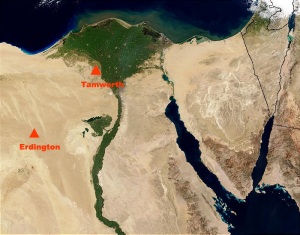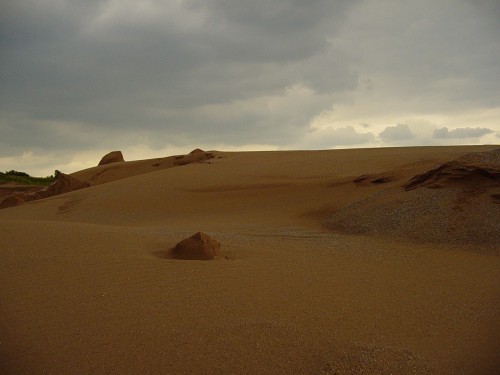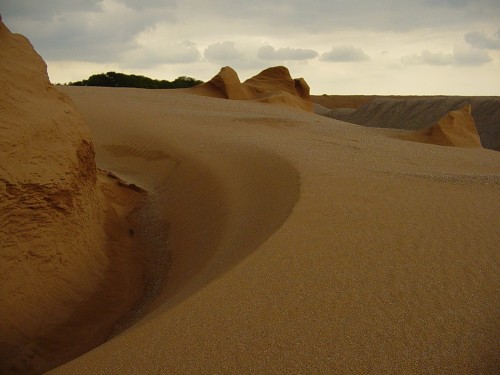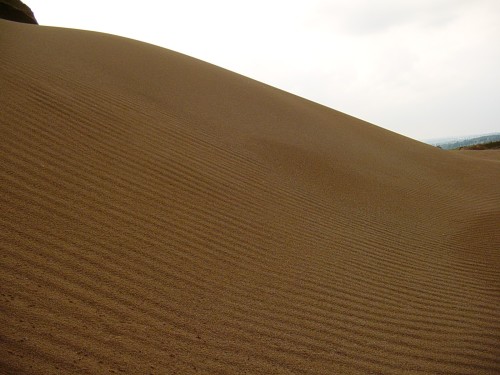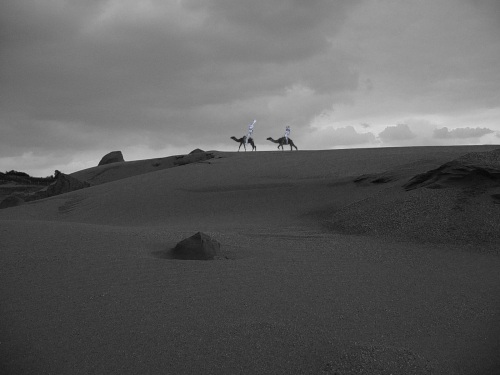Since writing this series on underground spaces(see underground categories) in the Tamworth area, I´m seeing and imagining tunnels, subterranean spaces everywhere!
Here´s a short incomplete list of some of the places I´ve seen, read or heard about subterranean spaces the last mont; Exploration Forums like Dark places and organisations Subterranea Britannica.Queries about rumours of underground tunnels in nearby Lichfield. Blogs entries like this entry from the Cheltonia blog which includes underground cellars, also the oft cited bldgs blog and it´s fascination with some fascinating subterranean worlds. Then just when I want to get away from it all I start seeing it in films I´ve recently seen , Hellboy 2, Fantastic Mr Fox on and others I can´t remember right now. Even when I go on to a visit of the San Miguel de los Reyes Monastery here in Valencia where on betting that tunnels will be mentioned, the guide overheard me and sure enough went onto to tell the story of escape tunnels excavated beneath the monastery into the fields when the monastery was used as a prison in and after the Spanish Civil war and until the 60´s.

The San Miguel monastery above where the Great escape style tunnel breakout took place. The escapees actually got away with it and were never caught! The guide mentions that he knew one of the prison guards who was there when the escape happened. The tunnel story should be an integral part of the tour because as everybody knows people love tunnel stories.
The reasons for popularity of underground spaces are many. They appeal to our sense of adventure and mystery, they captivate and repel us with fear, filth, darkness. They are metaphors for other worlds, alternative worlds and in past cultures provided the gateway to the other world(s),
Whatever the reasons I´ve got to stop and move on with this subterranean fixation, so this is the last post(for now) on underground spaces in the Tamworth Timehikes area.

It´s the new year(Happy New Year!), days are getting longer, the sun is shining(at least in Valencia) so it´s time for Abe and Ernst to step out from the shadows of the underworld, and onto exploring the surface world, but just before couldn´t resist one last dip into the depths of the underworld of Tamworth Timehikes.
Secret tunnel in the village of Hints.
In proof that secret tunnels can even be used as a selling point, Paul Carr estate agents advertise the 1,500,000 pound Vicarage in the village of Hints with the possibility of your very own secret tunnel included between the vicarage known as Chadwick house and the church of St Bartholomews.
The vicarage and rebuilding of the present church of St Bartholomews was built and paid for by the cotton entrepeneur James Chadwick. Did this building work include a secret tunnel? Is this one of those follies that the landed gentry loved so much in pre-television days?
hypothetical route of the secret tunnel taking the shortest route between the two places.
If it was a rich man´s whim then the 50 metre stretch of tunnel would be an expensive and labour heavy whim. Sure enough I´ve enquired about the secret tunnel story and it´s source with the estates agents with no response. Rising to the challenge I´ve sent out emails to Hints forum, church of St Bartholomew and have been met with a wall of silence. This could be due to it a) being some masonic millennium old secret,b)no interest in pesky emails about tunnels(can´t be true) c)went to wrong person, or d) simply haven´t got round to answering the query. Take your pick.
Could be part of the thought that Hints is apart from being a beautifully located place is to my eyes a zealously guarded private place. It´s long drives with houses out of view, narrow high hedged roads, lack of a public space(no pub) all indicate it, to me anyway. It´s private architecture is so well conceived that the village seems to be almost invisible! The annual Hints Open garden festival only accentuates the privacy of the place the rest of the year. Hints is by no means unique in these characteristics, it´s in fact the norm for the affluent rural english countryside.
Old Tamworth town hall dungeon

The above picture is taken from the superb English Buildings blog, which pays homage to the architecture of old town hall. The 1701 building with later additions is indeed a very special building but here as is becoming tradition straight onto it´s underground credentials.
The ever reliable and highly detailed 1875 The History Town and Castle by Charles Ferrers describes the underground dungeon beneath the town hall built in 1812. He describes the dungeon as small, but dry and clean and goes onto say that prisoners are usually removed to the jails in the county-towns with very little delay.
I have a very murky memory of someone talking about an entrance to an underground space at the town hall. This may have fed in part to the story of Tamworth´s ley tunnel from the castle to church. Secret tunnel stories do seem to usually have something tangible in their origins. Most towns have these stories and could be folk ways of explaining long forgotten subterranean spaces like long ale cellars, medieval conduits, and in some cases real genuine tunnels!
The mining areas and coal fields of Kettlebrook,Glasgote, amington, Polesworth.

I´m showing the above 1899 ordnance map taken from Staffordshire past track(click here for the site)to show that this area was riddled with mining activity.The disused collieries and associated shafts are everywhere and it must be a swiss cheese of mines beneath the area! Most if not all are infilled , shafts tapped but is there an abandoned underworld of old machinery, shafts and tunnels beneath the extensive housing estates that will outlive what´s above?

Underground railways from the 1950´s at the now defunct Birch Coppice colliery taken from windows on Warwickshire shows an underground world created and worked in by the miners.
Read Full Post »













